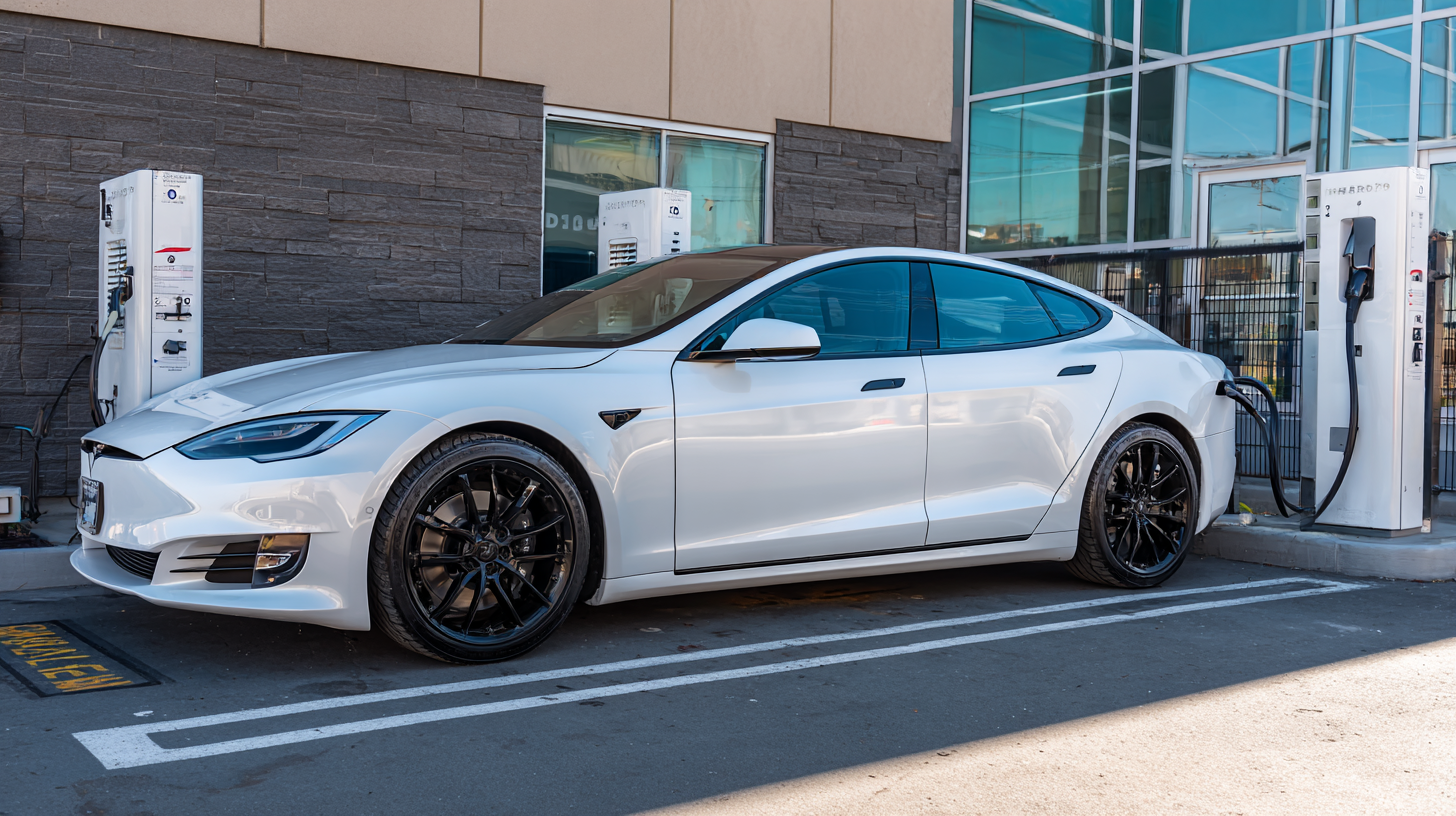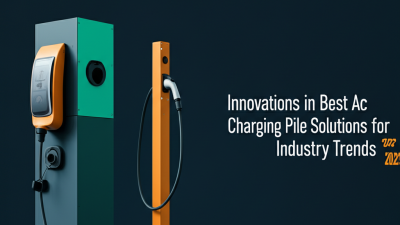The electric charging business is rapidly evolving as the demand for electric vehicles (EVs) continues to surge, projected to reach over 300 million by 2040 according to BloombergNEF. To capitalize on this growth, operators must innovate and strategize for maximum profitability. With an increase in the number of electric cars on the road and growing governmental support for sustainable energy, the global EV charging market is expected to exceed $30 billion by 2027 as reported by Fortune Business Insights.

However, to thrive in this competitive landscape, charging station owners must optimize their services and infrastructure, implement effective pricing strategies, and leverage data analytics to enhance customer experiences. This blog will explore actionable tips to refine your electric charging business, ensuring it not only meets market demands but also maximizes revenue potential in an ever-changing industry.
When it comes to optimizing your electric charging business for maximum profitability, identifying key locations for charging station deployment is crucial. The success of your charging network hinges on understanding where the demand for electric vehicle (EV) charging is most concentrated. Conducting comprehensive market research can reveal high-traffic areas, such as near shopping centers, offices, and transit hubs, where EV owners frequently seek charging options. This strategic placement not only increases the likelihood of usage but also enhances visibility and accessibility, attracting more customers to your stations.
In addition to analyzing traffic patterns, consider the demographics of the area. Locations with a higher concentration of EV owners—such as affluent neighborhoods or zones with eco-conscious communities—can yield greater returns. Partnering with local businesses or public agencies can also provide insights and opportunities for mutually beneficial arrangements, such as offering charging solutions at their locations. By aligning charging stations with the habits and needs of potential users, you can drive higher utilization rates and maximize profitability in your electric charging business.
 In today's rapidly evolving landscape of electric vehicles (EVs), enhancing user experience through smart charging solutions is crucial for businesses aiming to thrive and maximize profitability. Smart charging stations not only facilitate efficient power delivery but also offer features that significantly improve customer engagement. With real-time data and user-friendly interfaces, EV owners can easily locate available charging spots, monitor charging status, and even schedule charging sessions according to their convenience. This level of control fosters trust and satisfaction, encouraging repeat usage.
In today's rapidly evolving landscape of electric vehicles (EVs), enhancing user experience through smart charging solutions is crucial for businesses aiming to thrive and maximize profitability. Smart charging stations not only facilitate efficient power delivery but also offer features that significantly improve customer engagement. With real-time data and user-friendly interfaces, EV owners can easily locate available charging spots, monitor charging status, and even schedule charging sessions according to their convenience. This level of control fosters trust and satisfaction, encouraging repeat usage.
Moreover, integrating smart technology into charging solutions enables businesses to implement dynamic pricing models that reflect demand. By using data analytics, businesses can identify peak usage times and adjust pricing accordingly, promoting usage during off-peak hours and maximizing revenue. Additionally, features such as mobile app integration for booking and payments streamline the user experience, making it seamless and hassle-free. As the market for EVs continues to grow, businesses that prioritize smart, user-centric charging solutions will not only enhance customer loyalty but also position themselves for sustainable profitability in the competitive landscape of electric charging services.
Dynamic pricing strategies have emerged as a powerful tool for optimizing profitability in the electric charging business. By adjusting prices based on real-time demand, business owners can maximize their revenue streams while attracting a broader customer base. For instance, during peak hours, higher prices can reflect the increased demand, encouraging users to charge their vehicles during off-peak times. Conversely, during periods of lower usage, reducing prices can incentivize more customers to utilize charging stations, ensuring consistent operational traffic.

Implementing technology to facilitate dynamic pricing is key. Utilizing data analytics can help businesses identify customer behavior patterns and peak charging times. This information allows for the strategic adjustment of prices in a way that aligns with demand fluctuations. Additionally, communicating these changes transparently to customers can enhance customer satisfaction and loyalty, as they perceive value in the flexibility offered. By fine-tuning pricing models to respond to market trends and customer needs, electric charging businesses can significantly boost their profitability while contributing to a sustainable future.
As the electric vehicle (EV) market continues to grow, optimizing your electric charging business for maximum profitability is essential. One effective strategy is to leverage partnerships that enhance your visibility and accessibility in the market. Collaborating with local businesses, municipalities, and property owners can help establish charging stations in high-traffic areas. By positioning chargers where potential customers frequent—such as shopping centers or office complexes—you enhance the likelihood of attracting more EV drivers and make charging more convenient.
Additionally, forging alliances with EV manufacturers or local transportation services can extend your reach. These partnerships can facilitate exclusive charging agreements or promotional collaborations that drive traffic to your stations. For example, co-marketing initiatives can raise awareness about available charging options, while technology partnerships might allow for integrated apps that guide drivers to your locations. By tapping into existing customer bases and optimizing accessibility, your business can not only generate higher foot traffic but also foster a loyal customer base in an increasingly competitive landscape.
This chart illustrates the monthly revenue generated from different partnership types in the electric charging business. Leveraging strategic partnerships significantly impacts visibility and accessibility, leading to increased overall profitability.
To maximize profitability in the electric charging business, utilizing data analytics is essential. The ability to collect and analyze vast amounts of data can significantly enhance charging operations, allowing businesses to streamline their services and improve user experience. For instance, advanced analytics can identify the most frequently used charging stations, optimal charging times, and customer preferences. By understanding these patterns, operators can enhance the placement of charging infrastructure, ensuring accessibility and convenience for electric vehicle users.
Moreover, cloud migration enables businesses to tackle challenges associated with data storage and processing power. The scalability and flexibility of cloud solutions allow for real-time data analysis, facilitating immediate insights into charging operations. This integration of technology not only alleviates potential bottlenecks but also empowers businesses to make informed decisions swiftly. By leveraging these data-driven strategies, charging companies can tailor their offerings and ultimately increase their profitability in a rapidly evolving market.
| Charging Station ID | Location | Total Charges Last Month | Average Charge Duration (mins) | Revenue Generated ($) | Average Cost per kWh ($) | Customer Satisfaction Rating |
|---|---|---|---|---|---|---|
| 001 | Downtown | 120 | 30 | 1800 | 0.15 | 4.5 |
| 002 | Midtown | 80 | 45 | 1600 | 0.18 | 4.7 |
| 003 | Uptown | 95 | 50 | 1900 | 0.20 | 4.6 |
| 004 | Suburbia | 60 | 35 | 1200 | 0.16 | 4.4 |






